6172RB Science a STEM approach Year 2 low res watermark
You also want an ePaper? Increase the reach of your titles
YUMPU automatically turns print PDFs into web optimized ePapers that Google loves.
Earth and space sciences<br />
OUR RESOURCEFUL WORLD<br />
<strong>STEM</strong> project<br />
<strong>STEM</strong> project overview<br />
Compost bin<br />
Students work in groups of 2–3 to design and create a miniature compost bin to show the<br />
school gardener how he/she can reuse waste materials from Earth’s natural <strong>res</strong>ources to make<br />
a compost bin that will provide nutrients to the garden. Students then create a video explaining<br />
how a compost bin works and how the gardener will need to look after it.<br />
Concepts overview:<br />
<strong>Science</strong><br />
• Apply knowledge of Earth’s <strong>res</strong>ources and how reducing, reusing and recycling our waste can<br />
protect the environment for future generations.<br />
Technology/Engineering<br />
• Apply the design process to plan, create and evaluate a compost bin showing how food and<br />
garden waste, paper and cardboard can be reused.<br />
• Select appropriate materials and apply safety procedu<strong>res</strong> while creating.<br />
• Create a digital video to explain to the school gardener how compost bins work and how to<br />
look after a compost bin.<br />
Mathematics<br />
• Use knowledge of halves and quarters to measure and add waste materials to the compost bin.<br />
• Use a calendar to record when waste materials need to be added to the compost bin and<br />
when it will need to be mixed for airation.<br />
Alternative project ideas:<br />
• In groups, students design and create a water filter using a recycled plastic bottle and<br />
Earth’s natural <strong>res</strong>ources. Students take a digital photograph of each step and upload the<br />
photographs to a computer to create a step-by-step guide showing how to turn ground water<br />
into clean drinking water. The p<strong>res</strong>entation must include students’ photographs and a written<br />
explanation of each step. See how to make the water filter at .<br />
• In pairs, students design and create equipment for an outdoor game or activity, using recycled<br />
materials. Suggestions include: traditional outdoor games, such as ring toss; real-life versions<br />
of digital games, such as Angry birds ; or enlarged versions of indoor games, such as Jenga .<br />
Students then create a video advertisement explaining why people should buy their game<br />
rather than a shop-bought game.<br />
© R.I.C. Publications<br />
Low <strong>res</strong>olution display copy<br />
R.I.C. Publications® – www.ricpublications.com.au 978-1-925431-95-7 YEAR<br />
<strong>Science</strong>:<br />
A <strong>STEM</strong> APPROACH<br />
103<br />
2


















